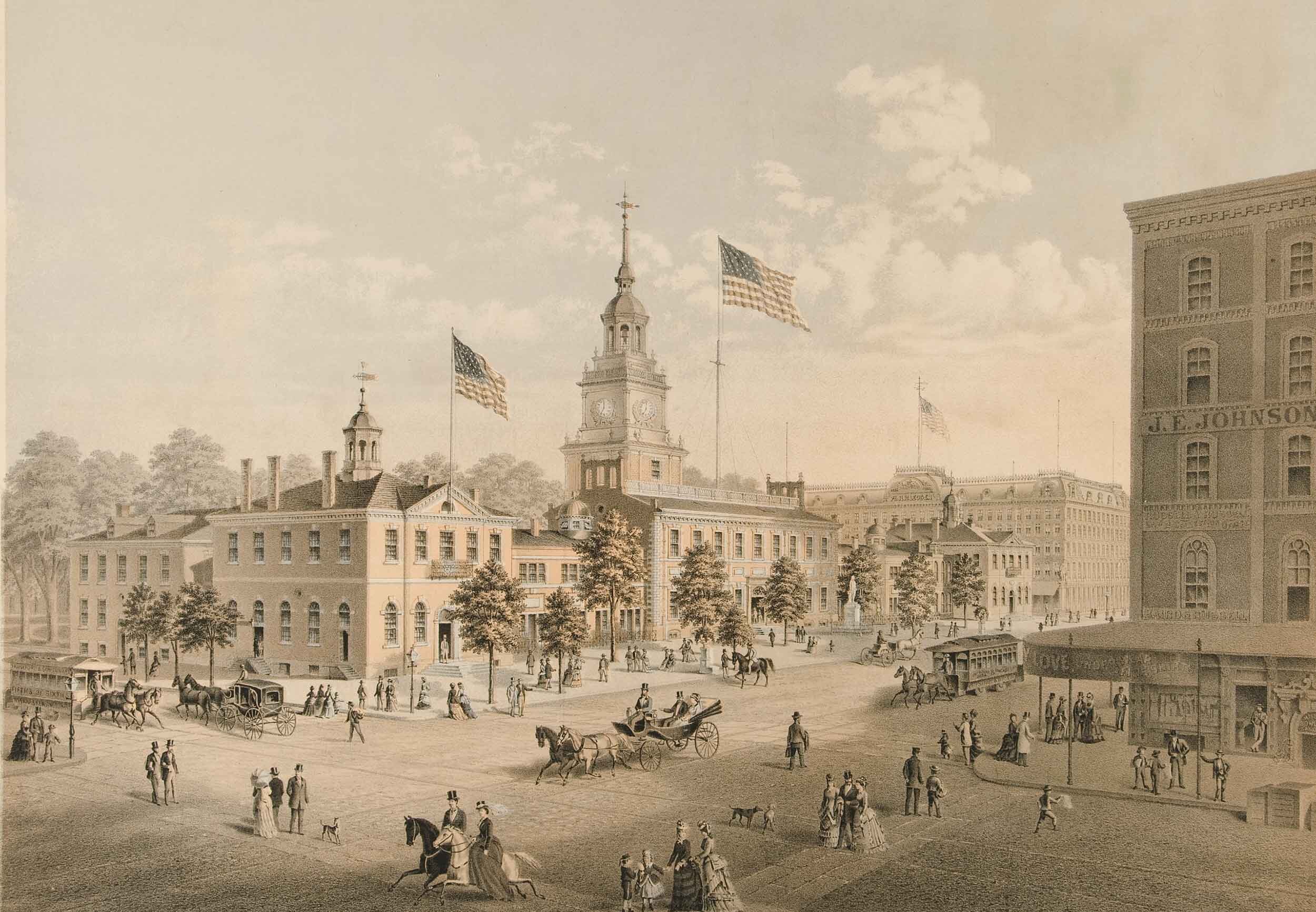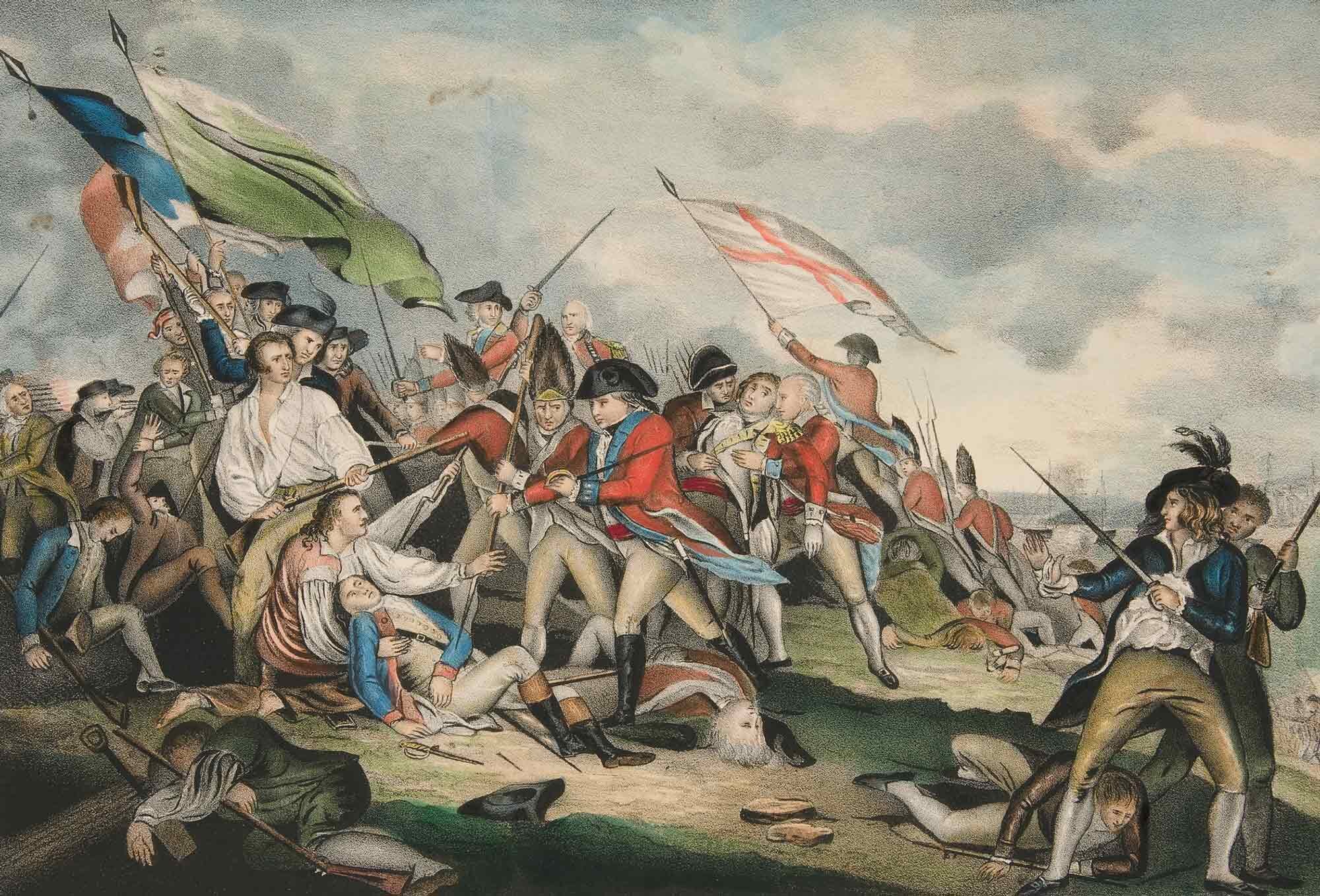The Declaration of Independence: Debate
When the Second Continental Congress convened in Philadelphia in May 1775, we had already fought the British at Lexington and Concord and affairs with the mother country were spiraling out of control. Over the next fourteen months, events would take place in America that would change the course of history.
Most of the representatives in Congress in the summer of 1775 still hoped for a reconciliation with England. After all, they thought of themselves as English. Their ancestors had come over from England, their laws were based on English laws, and the language of the land was English. Their currency, customs, religion, and countless other habits were all learned from the mother country.
Not surprisingly, the first point of business for Congress was to try to forge a reconciliation with England and John Dickinson of Pennsylvania led this effort. Because most colonists viewed Parliament and not the King as the real problem, they sent a second petition, the so-called Olive Branch petition, directly to King George in July 1775. They soon found out they did not have a sympathetic ear with the King.
On August 23, in reaction to the Battle of Bunker Hill on June 17, Parliament passed the Proclamation of Rebellion which formally declared the colonies to be in a state of rebellion. By the time Congress’ petition arrived at court in late August, King George refused to even receive it and the chance for reconciliation was essentially at an end.
Notified in late 1775 of these developments, John Adams and others who saw independence as the only choice for the colonies began to agitate for it. Then, in January 1776, Thomas Paine, an Englishman newly arrived in America, published a pamphlet called “Common Sense” which advocated for complete independence from England. His timing was perfect.
Much like Harriett Beecher Stowe’s “Uncle Tom’s Cabin” crystallized the abolitionist movement in the 1850’s, Paine’s pamphlet presented to the American people a sound and well-reasoned argument for why separation from England made sense. Ideas that only months before were almost too extreme to discuss were now seen as the best alternative.
The table was now set for the great debate to reach its inevitable conclusion. John Adams stated “Before God, I believe the hour has come. Independence now and Independence forever”. However, because many of the delegates had never been given authorization by their state assemblies to vote in favor of independence, Congressional leaders sent word to all thirteen state assemblies for them to provide this authorization.
The debates were intense, but by late June enough progress had been made towards securing the votes that Congress created a “Committee of Five” to draft a resolution declaring independence. This committee which included John Adams, Benjamin Franklin, Robert Livingston, Roger Sherman, and Thomas Jefferson, wanted Adams to draft the document. However, Adams insisted that Jefferson do the writing with Adams editing it as needed.
On July 2, the Congress approved the Lee Resolution, introduced by Richard Henry Lee of Virginia, calling for independence from Great Britain. The Committee of Five promptly submitted its declaration document to Congress which they approved, after several modifications, on July 4. Thus, in the minds of the delegates, and soon in the eyes of the world, our nation was born.
WHY IT MATTERS
So why should understanding the debate over the Declaration of Independence matter to us today? We need to recognize the depth of the debate and the widely varying opinions regarding the proper course of action for the colonies to take. We should appreciate that our Forefathers agonized over their decision as signing their name to this document put them at risk of losing life and livelihood. Ultimately, their courageous decision started us down the path to the life we enjoy today in America.
SUGGESTED READING
Thomas Paine’s “Common Sense” written in 1776 is one of the most impactful books in American history. The importance of its message and the timing of its publication combined to convince a large portion of the American people that complete independence from England was the best course of action for the colonies. This is a must read for all Americans.
PLACES TO VISIT
The National Archives Museum in Washington is a wonderful place to visit. It houses our nation’s three most important documents, the Declaration of Independence, the Constitution, and the Bill of Rights. This museum is not to be confused with the Library of Congress, another great site to see in DC.
Next time, we will discuss the actual content of the Declaration of Independence. Until then, may your motto be “Ducit Amor Patriae,” Love of country leads me.





On May 15, 1776, the fifth Virginia Convention meeting in Williamsburg passed a resolution calling on their delegates at the Second Continental Congress to declare a complete separation from Great Britain. Accordingly, on June 7, Richard Henry Lee rose and introduced into Congress what has come to be known as the Lee Resolution.